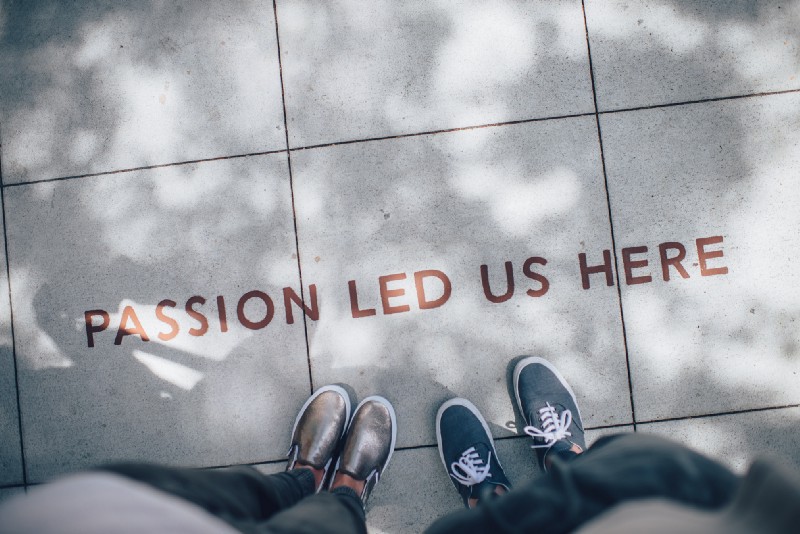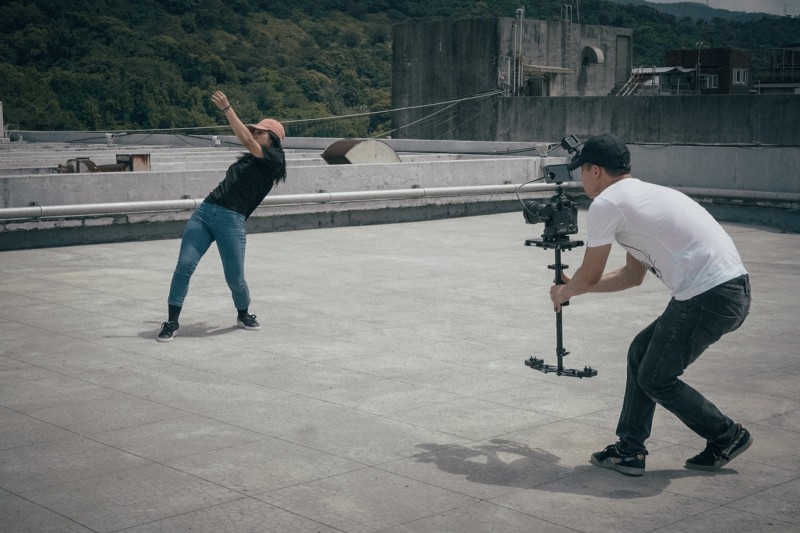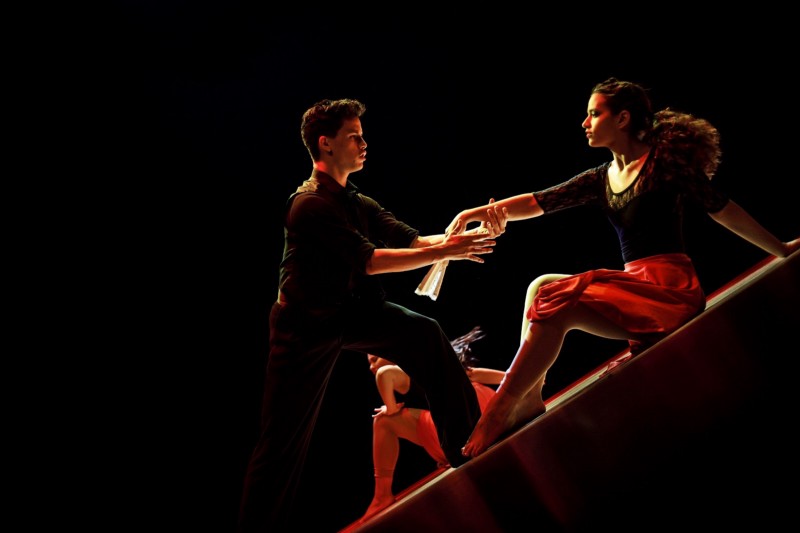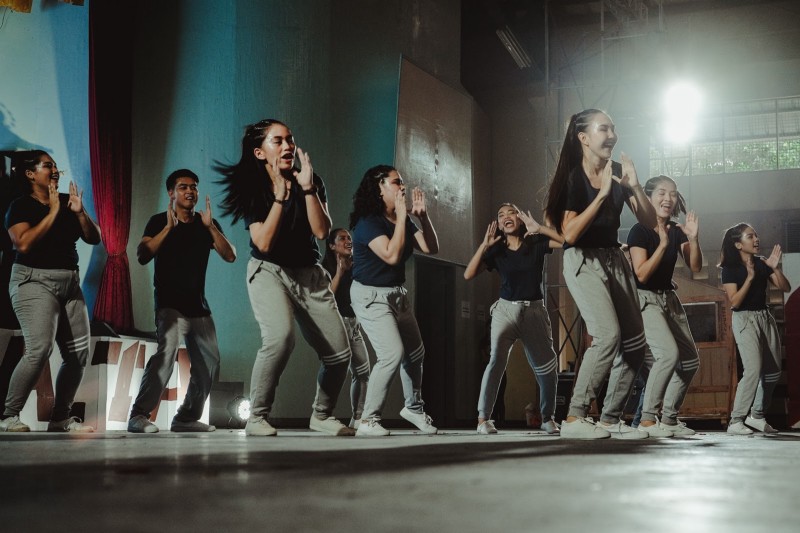My students often ask me who my favorite teacher was when I was in school, and Ms. Brady always comes to mind.
Why? They probe. Why was she your favorite teacher?
Ms. Brady wasn’t just my teacher. She was my coach. My dance coach. I took her dance class every single day I attended high school for 4 years straight. Dance was the elective I consistently chose over all other electives. Thinking back I realize, Ms. Brady never “taught” me dance. She never stood at the front of the room with the expectation I should copy her movements and repeat. Instead, she gave me space to choreograph my own dream dances. From conceptualizing a “story” my dance was to tell, from finding music that would carry the story, from discovering movement that would direct the story, to selecting other dancers to characterize my story and perform it and bring it to life in front of others — the dance was always my own.
Much like the PBL process, my dance class was a class of self-discovery. And when considering best coaching strategies for PBL advisors, I can’t help but think back to Ms. Brady and her coaching style. Here are 5 coaching strategies that Ms. Brady modeled for me day in and day out.

1.Get comfortable with feeling uncomfortable
Projects are often complex and constantly evolving, and so it is only natural that students may surpass an advisor’s content knowledge or skill in a particular area of expertise through the PBL process. If we were to limit student potential to our own in every area of knowing, nothing would ever grow. Ms. Brady knew that our younger, more agile bodies were capable of creative opportunities beyond her comfort zone, and so she nurtured our potential by embracing the unpredictable and allowing us the freedom to create rather than regurgitate. An organization called Moving Minds champions dance as a means to develop 21st century skills, and says “skills cannot be taught in a ‘how-to’ format. They involve making decisions within an infinite number of unpredictable contexts.” Guiding students through uncomfortable and unknown phases of their PBL journeys is key for productive progression.
2.Coaching is collaborative rather than evaluative
Despite whether standards are imposed on you externally or competencies personalized within your school, coaching is most effective when non-evaluative and stems from a place of integrity. Students can feel whether their advisor has heart in what they are doing rather than checking off a box from a compliance standpoint. We shouldn’t disregard standards, but rather make them our allies rather than our enemies. Ms. Brady never positioned our performances as evaluative when, in fact, we did get grades for them. With peer review sessions at the end of every week, we performed our routines for one another in different stages of completion, with room for constant feedback and growth. In taking genuine interest in our development, Ms. Brady guided us to then take genuine interest in each other’s development. Modeling a strong growth mindset is a more valuable teaching tool than teaching strictly by evaluative measures. We were reaching the standards through true engagement rather than compliance.

3. Model the learning culture you hope to see in students
Peter Wieczorek, Director of Northwest Passage High School (NWP), discusses the importance of supporting a strong learning culture as a PBL coach. He says, “from the very beginning, we [staff] had to be learners. There was no real road map then for project-based learning, or for how to do the relational work we were doing in the advisory system that we have. We, as a group, were our own cohort and advisory of continual learners, and for us it has always been about that learning environment.” In dance class, Ms. Brady never valued who was most skilled and rarely spoke of skill level — she spoke of dance. As a life-long learner of dance, Ms. Brady most importantly modeled how to evolve with dance, rather than how to dance. We eventually recognized that dance, like other skills, are not static — you can’t climb into a comfortable area of proficiency of dance and level out — it is as flexible as it’s dancer is willing to be, and is ever-changing. To strive toward a forever evolving standard, rather than a flat standard, establishes a learning culture that will continue to explore unexpected heights.

4. Scaffolding and troubleshooting
Scaffolding is highly encouraged in the PBL process, but there is not an ultimate how-to guide which clarifies the best way to scaffold in every situation. Equipped with techniques, we try to move students progressively toward greater independence during the project process. Scaffolding paired with troubleshooting is an effective way to train students to solve their own problems while tracing and correcting their faults. Every dancer knows that you cannot take a stage without running through a dress rehearsal. Ms. Brady didn’t have to tell us where our missteps were, because they were glaringly obvious once we ran through the full production with sound, lights and staging. While the coach sets the stage for scaffolding and troubleshooting, the students direct the real production. We must build time into the project process for ‘dress rehearsals’ and the subsequent improvements they trigger, such as making time for failure, reflection and revision.
5. Curate, celebrate… and think like a dancer
Andrew Miller in his article 7 tips for Coaching PBL encourages educators to curate and celebrate all project work. Miller says, “It is important to share the work publicly but do so in a way that celebrates the work of PBL and more importantly the thinking and reflection that teachers engage in. Celebration isn’t just about the final product, it is about the process.” I propose we should curate, celebrate and think like a dancer… A choreographer evolves through a design process of vision, ideation, rehearsal, routine curation and performance. And after every performance, we celebrate! But beyond curation and celebration, dancers’ know there is always a chance they will revisit the same routine for later performances. Therefore rather than being a linear process, they continue the design cycle for many iterations in real-life project fashion.

Let’s Dance
Ultimately, PBL coaching is about giving your students the space, time and trust to liberate their learning. Your vision will inform your students’ vision, so let your vision be limitless. Ms. Brady led the strongest dance program in our district because she believed in our vision and empowered us to think beyond standards, rather than guide us towards hers. By supporting the PBL coaching process and establishing a fierce learning culture, any school can set the stage for student-centered success.